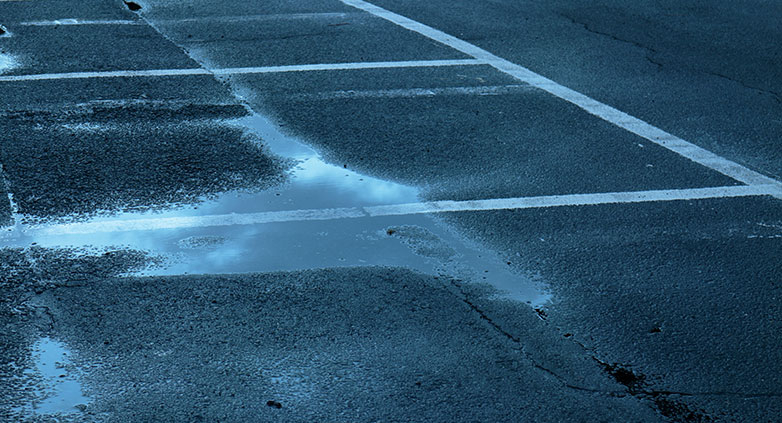Asphalt Water Guide – How to Prevent Infiltration
In the battle against rain, every homeowner and business owner faces the challenge of protecting their asphalt surfaces. Ensuring proper drainage is crucial for preventing water-related havoc and potential damage.
Asphalt pavements face a formidable foe in water. Excess water, often underestimated, can erode and break down even the sturdiest asphalt, turning it hazardous. Proper drainage is paramount for safeguarding your property from water-related issues. Whether installing a new asphalt pavement or maintaining an existing one, prioritizing drainage is the key to longevity and performance.
Explore effective drainage systems to shield your asphalt from rain-induced damage. Uncover installation insights and maintenance strategies, ensuring your pavement stays resilient against water challenges for a prolonged lifespan.
How do you plan for and prevent water damage on your asphalt surfaces?
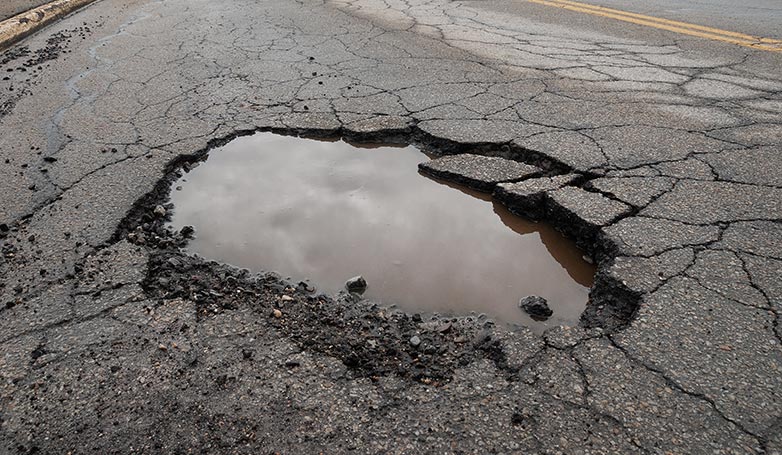
When preparing for a paving project, you should ensure you have a good drainage plan in place. Your paving contractor should build the pavement in a way that allows water to flow across the layers at a natural rate without compromising the whole structure.
Your pavement builder should account for a free water level that will penetrate the pavement structure and surface free water/runoff. Also, it is their responsibility to establish a plan for subgrade moisture.
This implies that your contractor should install the pavement itself alongside the subgrade in a manner that can redirect the water away before any damage happens. Paving professionals should take it upon themselves to offer an asphalt water guide to property owners embarking on a pavement project to avoid water-related damage in the long run.
So, what should you do to prevent water from damaging your asphalt?
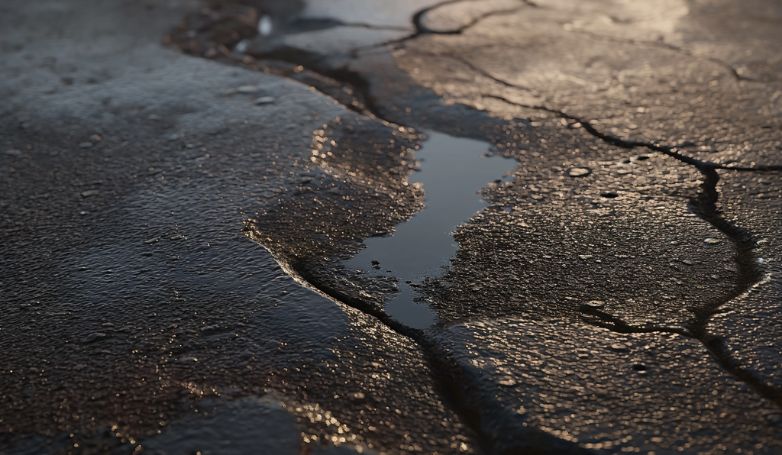
Standing water has the tendency to expand and shrink, causing the pavement to weaken. It can also damage your pavement’s full structural integrity when it gets into the sub-layers of your surface. So, to prevent water damage to your asphalt, the things you should do include:
Fill cracks
To prevent water infiltration and subsequent damage to your asphalt, prioritize crack filling. Water can seep into cracks, leading to erosion and compromising the pavement’s integrity. Utilize quality crack fillers to seal these vulnerabilities, reducing the risk of water-induced deterioration and extending the lifespan of your asphalt surfaces.
Plan adequate drainage
Strategically planning and implementing proper drainage systems is essential. This includes designing slopes and grading to direct water away from the asphalt surface. Installing effective drainage channels, such as French drains or gutters, helps prevent water accumulation, reducing the potential for erosion and damage to your asphalt pavement during heavy rainfall.
Investing in Sealcoating
Sealcoating acts as a protective shield for your asphalt, preventing water penetration and enhancing its resilience. Regularly applying a high-quality sealcoat forms a waterproof barrier, safeguarding the pavement from rainwater, UV rays, and other environmental factors. This proactive measure not only extends the life of your asphalt but also maintains its aesthetic appeal.
Regular Maintenance
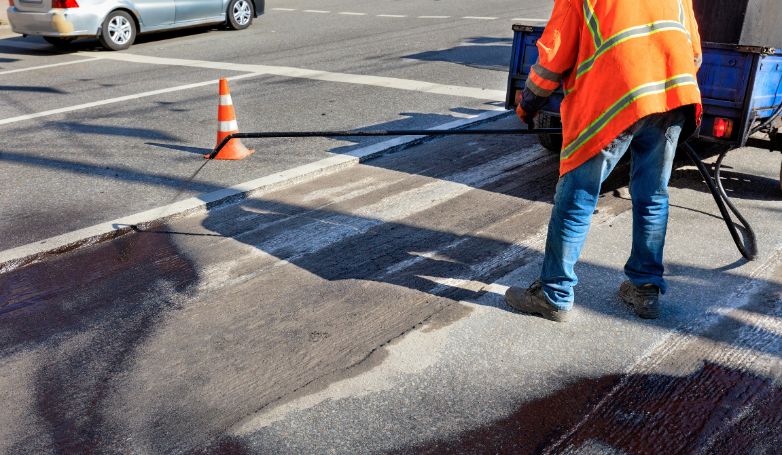
Consistent and routine maintenance is key to preventing water-related issues. Regularly inspect your asphalt surfaces for signs of wear, damage, or inadequate drainage. Addressing any issues promptly, such as clearing debris from drainage systems or repairing minor damages, ensures optimal performance and minimizes the risk of extensive water damage over time.
Pothole Repair
Potholes are a direct consequence of water damage and should be promptly addressed. Neglecting potholes allows water to penetrate deeper into the asphalt layers, exacerbating structural issues. Invest in quality pothole repair materials and techniques to promptly fill and seal these voids, preventing further water infiltration and maintaining the overall integrity of your asphalt pavement.
The more water is allowed to remain on top of your pavement or creep into the pavement itself, the worse the issue can get.
How water can damage asphalt surfaces
Although it might sound odd, water on driveways and other asphalt surfaces is probably the most significant cause of damage.
When cracks develop in asphalt pavement, they let water penetrate under the surface, deteriorating the ground below. Water can penetrate an asphalt pavement through cracks any time it rains, snows, or becomes damp, causing significant damage. Sometimes, this damage is not noticeable from the surface but can still be very widespread. It can result in potholes and other consequential types of damage that need expensive repairs if left for far too long.
Also, asphalt surfaces may be infiltrated by moisture, helping to weaken both the surface and the soil below. Especially with major driveways or parking lots, pooling or standing water areas may end up causing asphalt damage.
The importance of having proper drainage systems
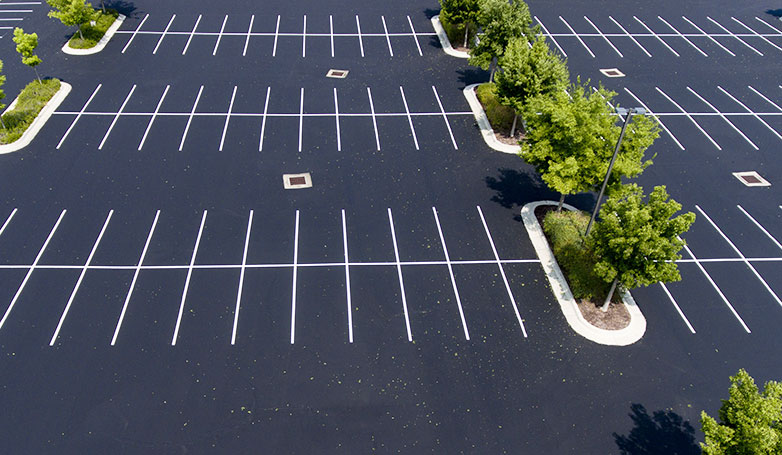
Every asphalt pavement’s foundation plays an essential part in its rigidity and structure. And because the substructure has a lot of roles, It is vital to follow a useful asphalt water guide so that it remains in the best possible shape with frequent maintenance aimed at keeping water away from the base and the rest of the home generally. Below are the importance of having adequate drainage systems
- It helps maintain the bearing capacity in the road structures and subgrade
- A good drainage system helps prolong the service life of the pavement
- A proper drainage system also reduces the pavement management costs
- A well-drained road surface increases friction, leading to shorter distances required to brake vehicles
- It controls erosion that may be a threat to the pavement
Proper drainage for asphalt driveways
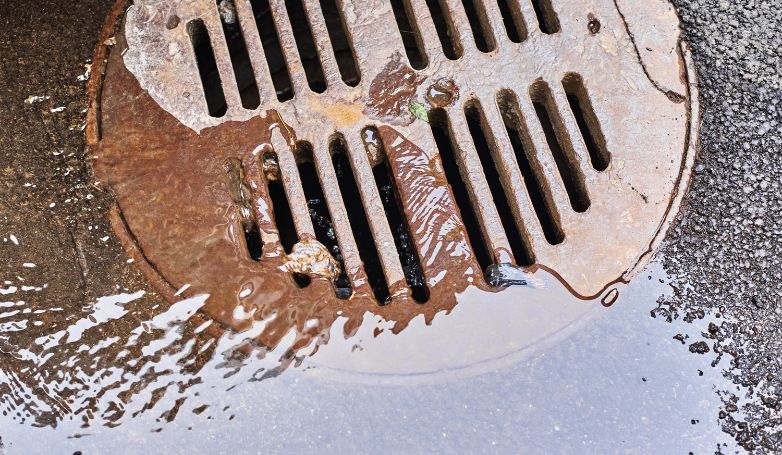
Quite a few individuals outside experts think about the significance of a driveway’s drainage planning. In contrast, most others fail to consider how important it is to step in the process. Your driveway can not correctly control water runoff without an adequate drainage plan, which can result in a flooded garage or funneling water in your driveway itself.
Your paving contractor should implement a good drainage system during the sub-floor installation before laying on asphalt. When you plan, it makes the installation process a smooth and easy one for the asphalt itself.
The most significant part of the planning process is to make sure that the driveway is graded, creating positive drainage flow away from the house. An adequately planned drainage remedy should lead to little or no pooling water on the driveway surface itself.
If the driveway is flat, water should all flow naturally either down each side or to the driveway’s slope. This is the reason contractors usually offer asphalt water guide to property owners before commencing the paving project.
Asphalt driveways drainage systems and design
With a trench drain system, standing water weakened bases and rotted siding can be prevented.
Trench drains (also referred to as channel drains) are ideal for diverting water away from your garage and base. You can avoid flooding and other collateral damage by building a channel at the opening of your driveway. It is possible to redirect stormwater into a lower point or established drainage runs.
Consider where the water is going to be directed, the amount of water you might deal with, and what kind of traffic is going to be crossing the grates.
A driveway trench drain is an incredibly efficient method, but lots of people have problems with it. Although they come in decorative designs, they are heavy and bulky to move. They can easily break when you have to clean out the drain.
Proper drainage for asphalt parking lots
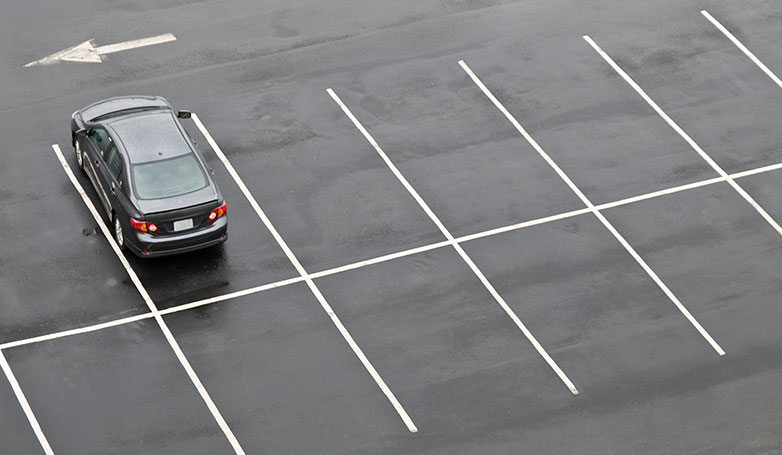
One important aspect is overlooked when constructing a parking lot, and that is a drainage system for parking lots. If the drainage system is not well laid out, it can result in groundwater problems. Therefore, adequate drainage of the parking lot is necessary to ensure the parking lot’s prolonged service life.
Asphalt parking lots’ drainage systems and design
After establishing the plan of the parking lot, a feasible pattern of parking space should be developed. Once you determine this pattern, you can then design drainage grades to prevent customers from stepping into gutters from their cars. You may also call in a professional to provide you with an adequate asphalt water guide.
A minimum 2% (1/4′ per foot) grade is required for all areas used by pedestrians in order to prevent puddles from forming in rainy weather. This grade’s implementation poses no issue on sloping terrain, but the built-in drainage valleys can possibly lead to a gently undulating surface on flat sites.
Buried conduits may well be needed to stop undesirable ponding on the paved area or excess flow. For current runoff conditions, the flows to the planned inlets should be determined, and, if appropriate, the spacing should be changed to provide satisfactory outcomes. Inlet spacing of no more than 200-400 feet will be suitable under average conditions.
Proper drainage for asphalt roads
Good roadway drainage is highly essential to ensure road safety. If you want to avoid flooding, roads must be well-drained.
Asphalt roads drainage systems and design
Drainage ditches are built around the roadway’s sides to collect the runoff from the surface of the asphalt pavement along with water from subsurface drains. These ditches often block and carry away water that would otherwise enter the roadbed, where the nearby region’s slope is toward the roadway.
V-shaped ditches should be avoided because they encourage erosion by focusing water flow at their bottoms.
If you want to increase the drainage ditch’s efficiency, it is typically better to widen it rather than deepen. Such ditches side slopes usually range from about 4 to 1 (for the slope nearer the roadway) to about 8 to 1 or flatter (for the far side).
Make the ditch large enough to hold all the surface runoff from the design storm. Furthermore, the ditch should be built to a steady, smooth grade without pockets or depression that will receive water. An asphalt water guide is essential in a nutshell, ensuring that your roads are devoid of potential water-related damages.
Asphalt maintenance to avoid water damage
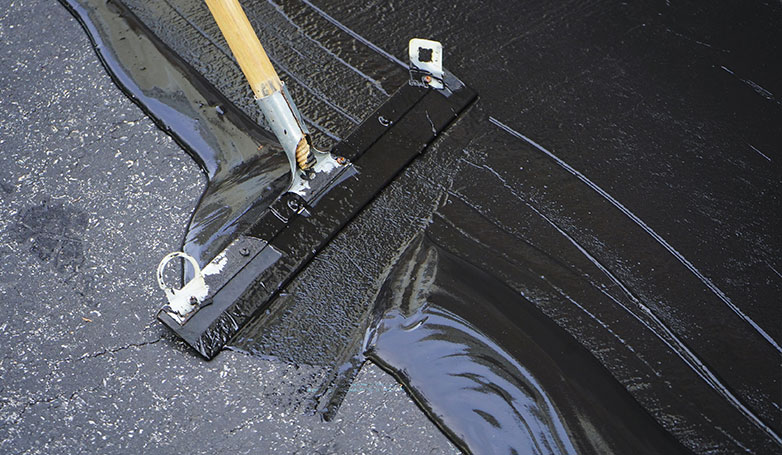
The following are a few maintenance practices you can do to avoid water damage:
- Add drainage
- Regular seal coating
- Quickly attend to cracks/other failures
Many homeowners and business owners only think of asphalt pavement repair once there is a severe issue on their pavement, including a pothole, rough surfaces, or hollow ground. This is, sadly, the wrong way to go about ensuring the pavement’s longer service life.
Because it can be very costly and difficult to fix if this type of damage happens, and you will spend more if you allow water damage to get out of control.
Practicing continuous asphalt maintenance and preventative measures to shield it against water damage is the smartest way to asphalt repair. Although this involves more regular work and checks, it can end up saving you a significant amount of time and money in the long run.
Taking timely action to protect your asphalt pavement from water damage can prolong the pavement’s service life, ensure safety on your property, and even save you money.
You can routinely use basic maintenance practices to guarantee your pavement’s longevity.
Add drainage
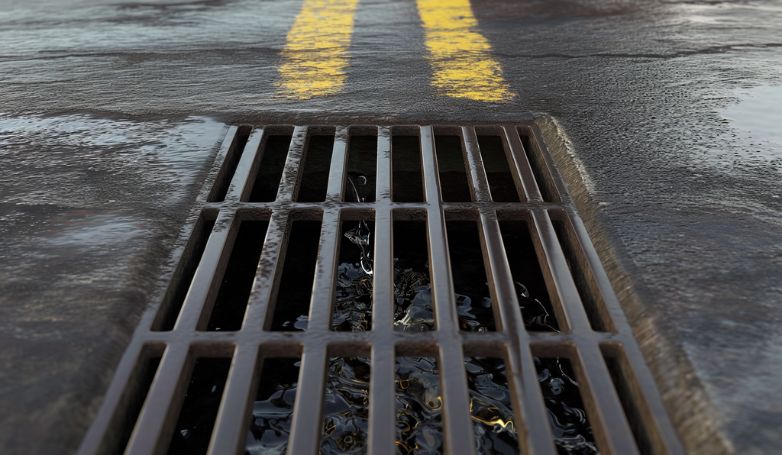
Adequate drainage is part of an efficient asphalt pavement. Therefore, ensure your pavement has a correct drainage system away from your pavement, as this will prevent any water from accumulating on your asphalt, causing cracks and deterioration. One way of doing this is to construct your driveway on a slope to drain off all the water. Doing this without an asphalt water guide in place will sometimes be difficult.
Your asphalt pavement will last for a very long period if correctly drained. Water that is allowed to pool on asphalt pavement surface due to improper drainage is highly detrimental. Without adequate drainage, pooled water from snow and rain can cause damage to the asphalt.
If you have adequate drainage in place, water will be impossible to settle on the asphalt. When water is correctly directed, your pavement will not encounter cracks and deterioration. Hence, ensure you maintain a sloped asphalt driveway to drain off the water that might pool and settle on it.
Regular seal coating
One effective way of preventing water damage and elongating your pavement’s service life is seal coating. This involves applying a protective sealant to the surface of the asphalt to seal cracks and keep the surface protected from moisture efficiently. When you apply sealant properly, it is also a protective solution against UV rays, snow, and other elements that causes damage to the pavement surface.
Sealcoat is an excellent way of making your asphalt pavement look good and protected from damage. It is a cost-effective approach used by property owners to avoid the formation of potholes and other severe damage.
Sealcoating is a highly recommended practice that you need to do every 2, 3, to 5 years, depending on the use and state of your asphalt driveway, parking lot, etc.
Quickly attend to cracks/other failures
If there are early signs of damage, repair them immediately. By frequently doing this, you will address any repairs and damages before they get out of control. With the right crack filling, water can be prevented from entering into the asphalt pavement, protecting the pavement from damage from the ground beneath. Following the asphalt water guide and having an adequate drainage system is a better way of preventing asphalt failure.
Potholes are usually the result of water damage, but they can trigger water damage as well. When potholes develop on the surface of your asphalt pavement, water can quickly flood in, causing worsening types of damage to your pavement. Hence, pothole repair should be treated with urgency whenever you notice it.
How porous asphalt can help deal with water
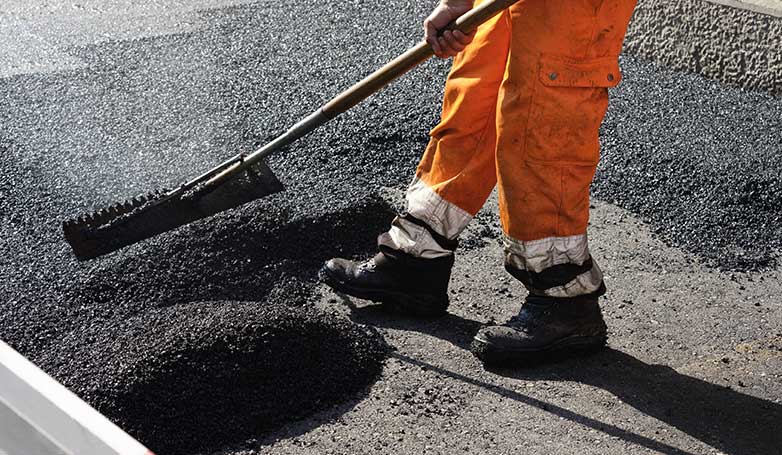
Porous asphalt pavement consists of an absorbent asphalt surface laid on top of a broad stone reservoir over a granulated working platform. By constructing the asphalt with an open-grade friction course, its surface is rendered porous.
An asphalt pavement that is correctly built will greatly minimize stormwater runoff by absorbing rainwater into the pavement system. High gaps in the porous asphalt pavement allow the water to drain into the stone recharge bed beneath the pavement(via the pavement structure) then into the water table.
Porous asphalt parking lots that are well built are attractive and cost-effective, with a lifespan of at least 20 years. Similarly, porous asphalt parking areas can offer efficient stormwater management, facilitate infiltration, remove the need for detention basins, and improve water quality.
Porous Asphalt Environmental Factors
Environmental factors and climate affects the design of porous asphalt pavement. And when you talk of critical porous asphalt environmental factors, dust should highly be considered.
Consistently blowing dust tends to clog the openings of the surface of the porous asphalt and seriously limit percolation through the system’s top layer. Going through a porous asphalt water guide can also help facilitate the percolation of water.
Due to this reason, porous asphalt pavement structures are not ideal for barren areas with medium to high winds. Therefore, Parking lots and recreation areas such as tennis courts, basketball, or playgrounds are the typical use of porous asphalt pavements.
Cost of Repairing Water Damaged Asphalt
Explore the following table for a detailed breakdown of the costs involved in repairing water-damaged asphalt. Whether you’re dealing with small cracks or contemplating resurfacing, these estimated costs per linear foot or square foot provide a practical guide for budgeting and decision-making in asphalt maintenance.
| Repair Method | Estimated Cost |
|---|---|
| Small Cracks Filling | $0.50 to $1.00 per linear foot |
| Medium Cracks Filling | $1.50 to $2.50 per linear foot |
| Large cracks Filling | $3.00 to $5.00 per linear foot |
| French Drains | $1,500 to $3,500 per drain |
| Grading and slope adjustments | $1,000 to $2,500 |
| Sealcoating Application | $0.15 to $0.25 per square foot |
| Small Potholes Repair | $50 to $100 per pothole |
| Larger Potholes Repair | $100 to $300 per pothole |
| Resurfacing or Overlay Per square foot | $2.00 to $3.50 |
These cost breakdowns provide a comprehensive overview of the financial considerations associated with repairing water-damaged asphalt, offering insights into the investment required for each specific repair method.
FAQs about Asphalt Water Guide
Here are the most common questions about water and asphalt.
Does asphalt need to be watered?
No, asphalt does not require watering. In fact, excessive water can be detrimental to asphalt surfaces, leading to issues like erosion, cracking, and a reduced lifespan. Proper drainage systems are essential to manage rainwater effectively without causing damage.
Does water flow through asphalt?
While asphalt itself is impermeable, water can infiltrate through cracks or poorly maintained surfaces. To prevent water from flowing through asphalt and causing damage, it’s crucial to address cracks promptly, maintain proper drainage, and consider sealcoating as a protective measure.
How long does asphalt need to dry before rain?
Newly laid asphalt typically needs sufficient time to cure before exposure to rain. The drying time varies based on factors such as weather conditions and the type of asphalt mix used. Generally, it’s advisable to wait at least 24 to 48 hours before subjecting fresh asphalt to rain to ensure optimal curing and durability.
Is standing water bad for asphalt?
Yes, standing water poses a significant threat to asphalt. It can lead to deterioration, weakening the pavement structure over time. Proper drainage is crucial to prevent standing water, as it can contribute to issues like potholes, cracks, and other forms of damage.
Does rain ruin asphalt?
While rain alone may not ruin asphalt, its impact can be detrimental when combined with poor drainage or existing pavement issues. Over time, constant exposure to rain without proper drainage and maintenance can lead to erosion, cracking, and other forms of deterioration, compromising the integrity of the asphalt surface.
Conclusion
Water is the primary enemy of asphalt pavement. Hence, you need to properly plan for an adequate drainage system that would prevent water from pooling on your pavement. Suppose you neglect to install a proper drainage system on your pavement. In that case, water will inevitably pool on it (especially during the rainy season), resulting in quick degradation and then severe damage.
Therefore, as you are planning for your asphalt project, make sure you also have a good drainage system in place to prevent the impact of water damage to your asphalt.
You can also call in a professional paving contractor to advise you on the drainage plan that would be best for your pavement.

